This article was co-authored by Ryan Corrigan, LVT, VTS-EVN. Ryan Corrigan is a Licensed Veterinary Technician in California. She received her Bachelor of Science in Veterinary Technology from Purdue University in 2010. She is also a Member of the Academy of Equine Veterinary Nursing Technicians since 2011.
There are 14 references cited in this article, which can be found at the bottom of the page.
This article has been viewed 10,862 times.
Cushing’s disease (or Cushing’s syndrome) is a disease of the pituitary gland, often caused by a tumor. There are several ways to diagnose Cushing’s disease. Physical signs include weight fluctuations, excessive sweating, and a hairy coat. Behavioral changes include lethargy, depression, variations in appetite, and walking gingerly in response to hoof pain. Once you notice any of these symptoms, contact your vet and allow them to run urine and blood tests to confirm if your horse has Cushing’s.
Steps
Diagnosing Physical and Biological Changes
-
1Look for irregularities with your horse’s coat. Most horses have short, fine hair. A long, wavy coat, by contrast, could indicate Cushing’s disease. Additionally, a coat that doesn’t shed regularly in the spring is a good indication that your horse has Cushing’s.[1]
- Irregularities of the coat is one of the most obvious symptoms that your horse has Cushing’s, and occurs in 85% of all cases.
-
2Monitor for immune system deficiencies. Horses with Cushing’s suffer increased rates of infection. They also tend to heal slowly from wounds.[2] If your horse is frequently diagnosed with parasites like pinworms (which are quite rare in adult horses), you should be suspicious as to why. These symptoms could indicate your horse has Cushing’s disease.Advertisement
-
3Check for reproductive anomalies. Infertility during middle age is not uncommon even in otherwise healthy horses, but in a horse younger than 15-20 years old, it might be a sign your horse has Cushing’s disease. Additionally, a mare that produces milk when it is not supposed to - or fails to produce milk when it has a foal – could have Cushing’s.[3]
-
4Look for an abnormal distribution of fat. If your horse has Cushing’s disease, fat will build up in certain parts of the body. Noticeable fat deposits on the crest of the neck, the sheath of the penis (the prepuce, or covering beneath the penis), the tail head (the part of the tail closest to the horse’s body), and above the eyes.[4]
-
5Look for other physical changes. If your horse’s muscles begin to deteriorate, especially above the topline (the neck, back, and rump), you should consult your vet. Likewise, a horse that sweats in excess may have Cushing’s disease.[5] Finally, look for a change in your horse’s normal stance. Your horse may appear potbellied, with a swollen or puffed-out belly. Alternately, your horse might become swaybacked -- that is, it’s spine might curve inward at an unusual slope.
-
6Get a medical examination. There are several tests your vet can perform in order to figure out if your horse has Cushing’s. Most of the tests evaluate the levels of different compounds in the blood.[6]
- Before having your horse tested, keep them as calm as possible, and keep your normal routine. Stress can alter the results of tests.
- One useful diagnostic test is the CBC (complete blood count). Your vet will draw a few vials of blood from your horse and measure the blood sugar levels, since horses with Cushing’s disease often have elevated blood sugar levels.
- Another blood analysis test is the dexamethasone suppression test (DST). In this test, the vet will inject dexamethasone, an anti-inflammatory agent that mimics cortisol. The next day, your vet will examine your horse’s cortisol levels with another blood test. An elevated level of cortisol indicates that your horse has Cushing’s.
- Your vet might also perform a urinalysis test. In this test, your horse’s urine is examined for exceptionally high levels of glucose (a sugar) and ketones (molecules produced when the body turns fat into energy).
- Your vet can diagnose Cushing's by looking at your horse's physical confirmation. This will save money on testing. They'll be able to tell if it's Cushing's or Insulin Resistance. IR can be reversed with exercise and cutting back on food.
Diagnosing Behavioral Changes
-
1Look for weird fluctuations in diet and weight. Horses with Cushing’s might experience one of several strange and counterintuitive weight-related scenarios. They might lose weight if they continue to eat the same amount of food they always have. Alternately, your horse might start eating significantly more than it used to, but fail to gain weight. Finally, a horse with Cushing’s might gain weight, but eat even less than it did before.[7]
- Keep an eye out for changes in your horse’s weight and the way your horse eats in order to get a diagnosis before your horse gets worse.
-
2Check for chronic laminitis. Laminitis (also known as founder) is the inflammation of the tissue within the hoof wall. The condition is very painful and will cause the horse to be unwilling to walk or move. Your horse might lie down and be reluctant to rise. When it does walk, it will do so extremely carefully and may place the heel of its hoof down first (rather than its toes) in an attempt to spare itself from pain.[8]
-
3Monitor for lower energy levels. Your horse might be depressed and lethargic if it has Cushing’s disease. You might notice that it only wants to sit in one spot all day, and acts less playful than it used to. These behavioral changes might just be a sign of old age, but they could also indicate that your horse has Cushing’s.[9]
-
4See if your horse is drinking an excessive amount of water. A consequence and related symptom of this high water consumption is that your horse will urinate frequently and in high volumes. Horses with Cushing’s disease drink and urinate in slightly different amounts, but if you notice your horse begin to drink anywhere from two to five times the amount of water it normally drinks, you should definitely suspect it has Cushing’s.[10]
- Most horses drink about 20 to 30 liters (5 to 8 US gal) of water each day.
- Horses with Cushing’s might drink up to 80 liters (21.1 US gal) each day.
- Instead of letting your horse drink out of a trough, hang buckets of water in their stall. Keep track of how often you have to refill the buckets each day so that you can accurately measure how much they drink.
Managing the Illness
-
1Get medication for your horse. After you notice several of the symptoms for Cushing’s disease, have your vet take a look at your horse. If your vet verifies that your horse does in fact have Cushing’s, they might give you a prescription appropriate for your horse’s age and condition. Horses with relatively mild symptoms respond best to medication. Medications for Cushing’s include:[11]
- Cyproheptadine, pergolide, and other medications that reduce the amount of pro-opiomelanocortin (POMC) and adrenocorticotropic hormone (ACTH), two biological compounds that affect that the operation of the endocrine system.
- Trilostane and other medications that suppress cortisol synthesis in the adrenal glands might also be useful.
- Some medications – bromocriptine mesylate, for instance -- can reduce both cortisol levels and ACTH levels.
- Your vet will determine which medication would be best for your horse. Let your vet know if one medication isn’t working for your horse so they can recommend a new dosage or prescribe an alternative medication.
- The medications will probably be orally administered, but they might be injectable. Always use medications as directed. Stopping the medication suddenly can cause problems for your horse.
-
2Try nutritional supplements. There are a number of nutritional supplements that could be beneficial to managing your horse’s condition. Magnesium, for instance, is one of the more commonly accepted nutritional supplements that might improve symptoms of Cushing’s disease. Chromium (or chromium picolinate) is another.[12]
- These supplements are best obtained online but may be available at pet stores or stores that specialize in horse health.
- After obtaining these supplements, use as directed. Directions for use vary based on your horse’s age and weight.
- Talk to your doctor about administering additional nutritional supplements to your horse.
-
3Avoid sweet foods. Horses with Cushing’s tend to be insulin resistant, meaning they have high blood sugar levels. Therefore, don’t give your horse anything with high levels of sugar, non-structural carbohydrates (NSC), or starch. Mints, sweet feeds, and other candies could push your horse’s blood sugar levels over the edge. Avoid feeds with added sugar or molasses, such as extruded feeds you might provide for older horses.[13]
- Even some pasture grasses can have high NSC levels.[14] Avoid or restrict pasture feeding, especially during spring and fall when NSC content in pasture grass tends to be highest. You can also use a grazing muzzle while they are in the field. These will help limit how much grass they eat.
-
4Engage in regular maintenance. A horse with Cushing’s needs all the things a regular horse does, but because of its precarious health, it is important not to miss a single veterinary appointment or tooth-brushing session. Pay particular attention to your horse’s nutrition, ensuring it eats and drinks enough for its age and weight. Get your horse dewormed regularly and provide vaccinations as needed.[15]
- If your horse has laminitis, consult a farrier and a veterinarian to ensure it gets special hoof care. Special hoof care includes Corrective Hoof Trimming and Realigning Trimming. These trimmings will reverse laminitis.
- Your Cushingoid horse might have trouble regulating its body temperature. Provide blankets in the winter and clip its excess hair in the summer.
References
- ↑ https://www.bicanadaequine.ca/ppid/ppid-symptoms
- ↑ https://www.southernstates.com/articles/managing-equine-cushings-disease-with-nutrition.aspx
- ↑ http://csu-cvmbs.colostate.edu/Documents/Learnmares41-reprodprob-Cushings-apr09.pdf
- ↑ https://www.myhorseuniversity.com/single-post/2017/09/25/equine-metabolic-syndrome-causes-signs-treatment-and-prevention
- ↑ https://www.bluecross.org.uk/pet-advice/care-older-horse
- ↑ https://ceh.vetmed.ucdavis.edu/health-topics/equine-metabolic-syndrome
- ↑ https://www.rvc.ac.uk/equine-vet/information-and-advice/fact-files/cushings-disease
- ↑ https://www.bluecross.org.uk/pet-advice/laminitis
- ↑ https://www.ed.ac.uk/files/imports/fileManager/Cushings%20and%20metabolic%20syndrome%20-%20updated.pdf
- ↑ http://csu-cvmbs.colostate.edu/Documents/Learnmares41-reprodprob-Cushings-apr09.pdf
- ↑ http://csu-cvmbs.colostate.edu/Documents/Learnmares41-reprodprob-Cushings-apr09.pdf
- ↑ https://ceh.vetmed.ucdavis.edu/health-topics/equine-metabolic-syndrome
- ↑ https://www.myhorseuniversity.com/single-post/2017/09/25/equine-metabolic-syndrome-causes-signs-treatment-and-prevention
- ↑ http://www.southernstates.com/articles/managing-equine-cushings-disease-with-nutrition.aspx
- ↑ https://extension.umn.edu/horse-health/caring-your-senior-horse
About This Article
To diagnose Cushing’s disease in your horse, start by looking for symptoms, like a long, wavy coat or a coat that doesn’t shed regularly in the spring. Since horses with Cushing’s suffer from more frequent infections, you’ll also want to note if your horse has a lot of illnesses, heals slowly from wounds, or has frequent bouts with pinworms. If you have a mare, check for reproductive anomalies, like infertility, producing milk when it’s not supposed to, or failing to produce milk when it has a foal. In order to confirm a diagnosis of Cushing’s, take your horse to the vet, where they’ll perform blood work and a urinalysis. For more tips from our Veterinary co-author, including how to get medication for a horse with Cushing’s, keep reading!
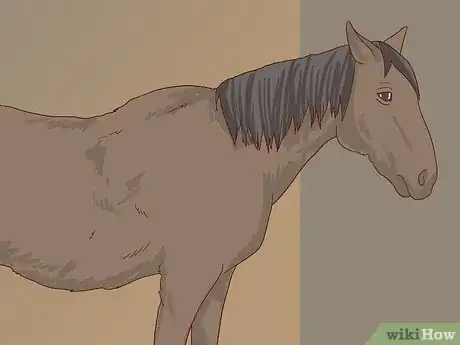
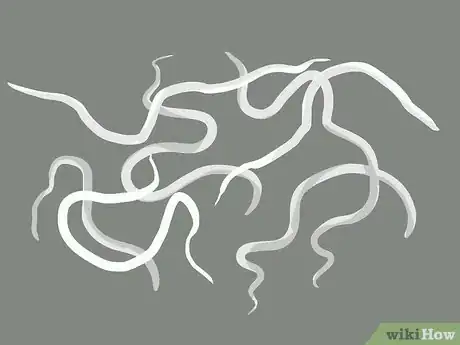
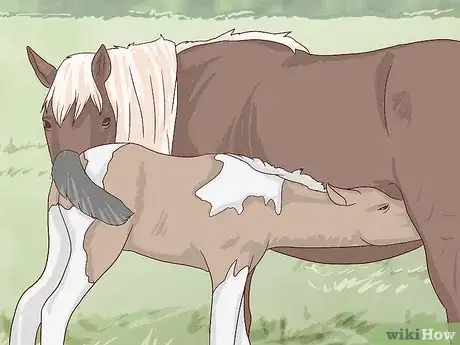

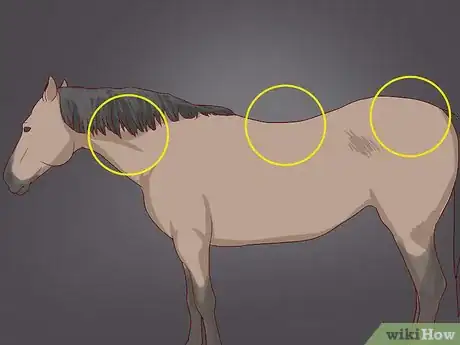
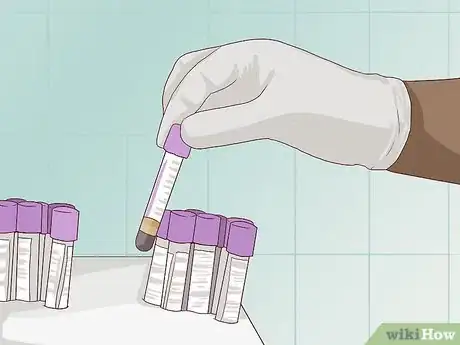
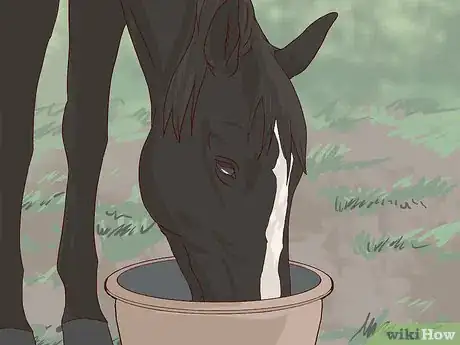

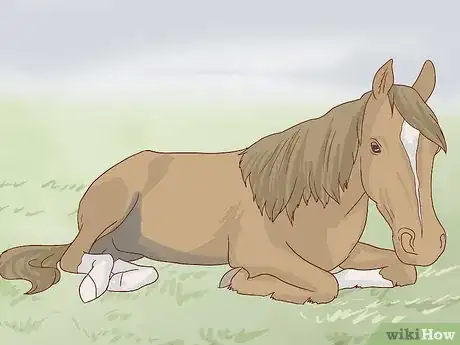

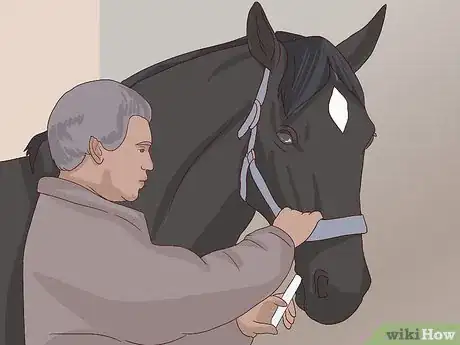

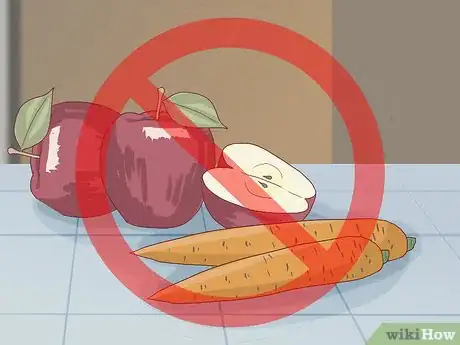

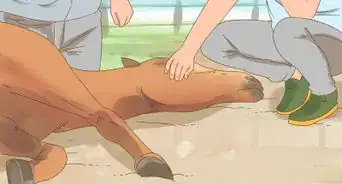

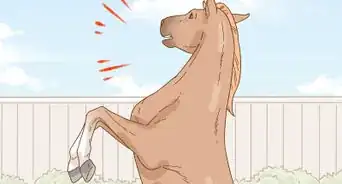
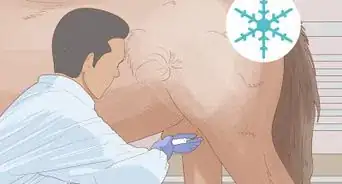

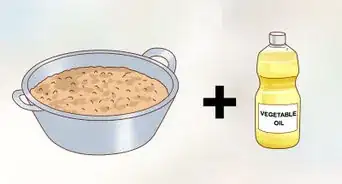
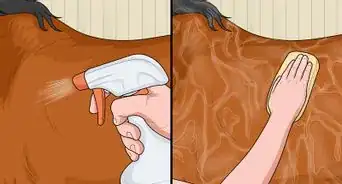
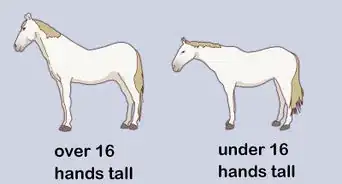
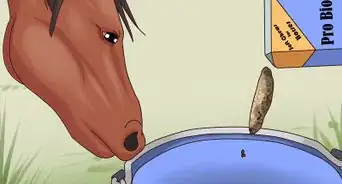



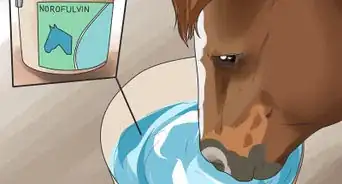
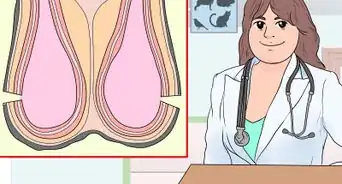








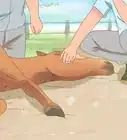
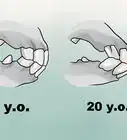

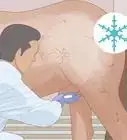



































Medical Disclaimer
The content of this article is not intended to be a substitute for professional medical advice, examination, diagnosis, or treatment. You should always contact your doctor or other qualified healthcare professional before starting, changing, or stopping any kind of health treatment.
Read More...